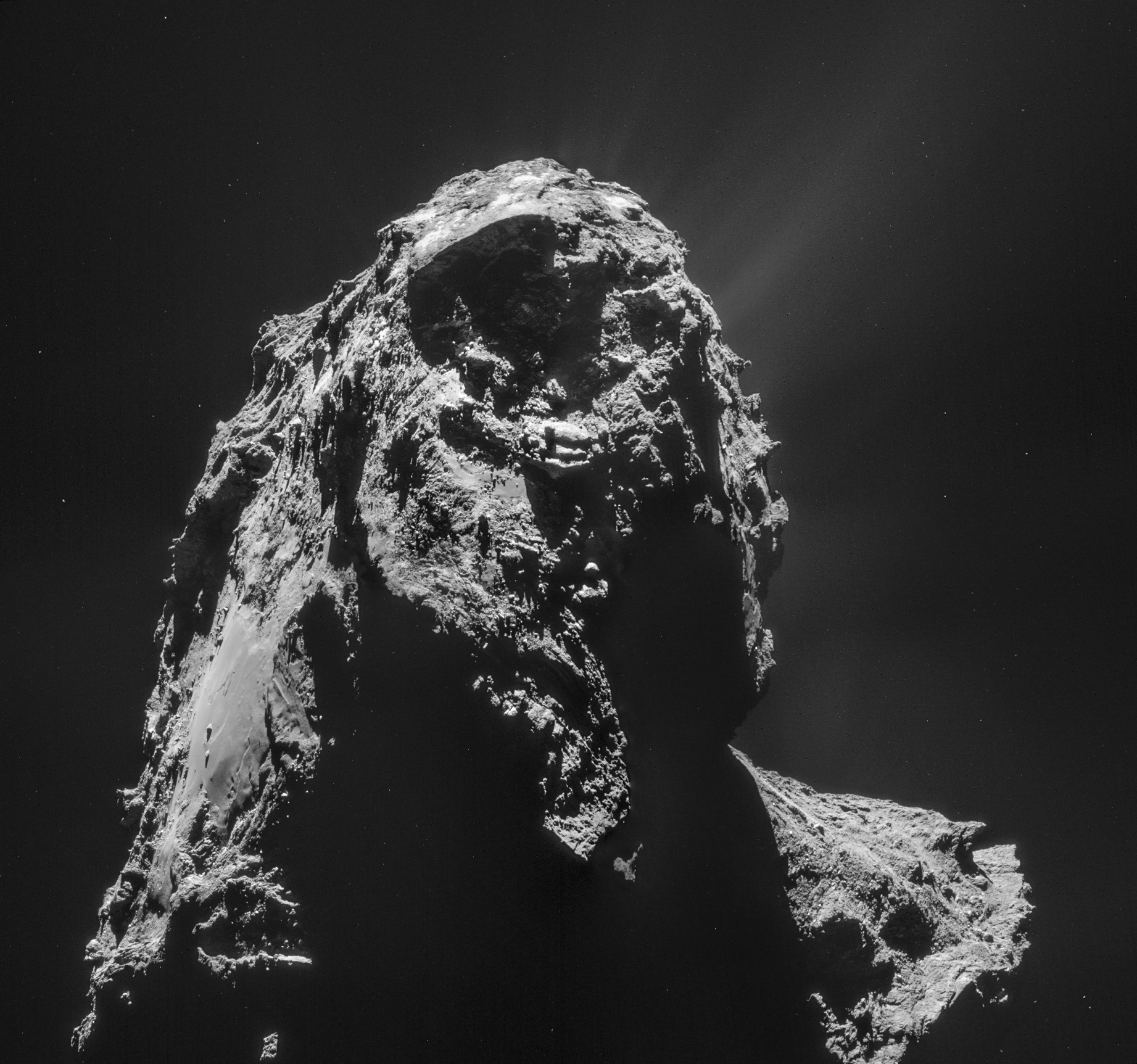This week there were just too many fantastic photo releases to pick just one and stick with it, so here are some of the great stories popping up with fantastic images to accompany them:
Fine Detail From Rosetta on 67P

This amazing shot from the Rosetta orbiter shows such incredible detail as comet 67P catches light from the sun. The shadows are what makes this image spectacular as you can see so many fine features. The other noteworthy part of the image is the bright streaks of material coming off the comet in the background. As the comet and the orbiter move closer to the Sun, the warming rays will melt the ices and liberate gas and dust from the comet, eventually becoming a bright coma. I can’t wait until those photos come in.
South Pole Storms on Venus

From the Venus Express mission’s Visible and Infrared Thermal Imaging Spectrometer (VIRTIS) comes a brilliant photo of the Polar Vortex discovered in 2006. Venus Express has kept a close eye on the storm since then, seeing it change shape and swirl. Here is a composite video made from images of the vortex.

The vortex is a result of warm air rising in the Venutian atmosphere and then spiralling down to the poles, where it cools and sinks. The winds of Venus are very fast up in the high atmosphere, yet very calm near the surface.
Comet Lovejoy For all to See

You could assume that after nearly two weeks I am tired of seeing so many photos of the same comet. But the beauty is that easy photographer reveals different perspective and detail in the 4th-magnitude traveller. It really speaks to the fact that with any subject or scene, photographers are distinct and no camera will ever capture exactly the same thing. The spectacular image above shows the bright coma and the intense details of the comet tail.

As a bonus, I had to post this amazing image showing an Atlas V launch of a US Navy satellite with the Universe behind it. So many features are visible in this incredibly wide-field image. Just above the streak of the rocket is the brightest star in the night sky, Sirius. Above that lies the familiar constellation of Orion with red star Betelgeuse and blue star Rigel, as well as the famed Orion nebula and faint Barnard’s Loop nebula visible. Keep going up higher and you can see the bright star Aldebaran with the Hyades cluster as it’s backdrop, and then further to the compact young blue stars of the Pleiades cluster. Finally the visiting comet Lovejoy is at the top of the image, giving us perspective on how vast the tail of the comet really is.
